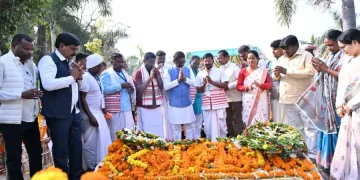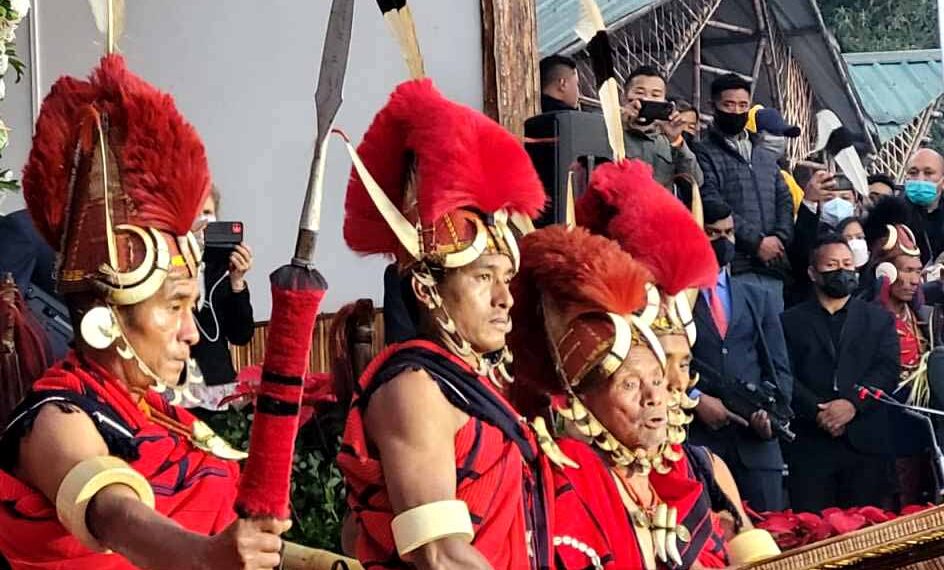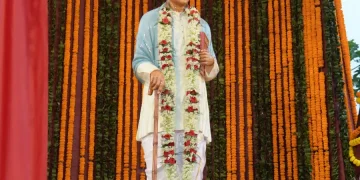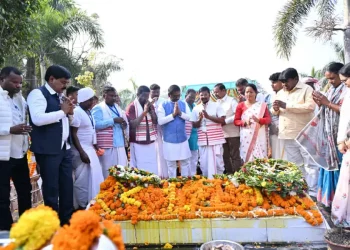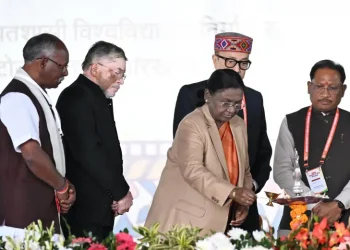The Nagas’ attire is rich with nuances, comprising different patterns and motifs and accessorised with ornaments. Clothing has always been a reiteration of social status, family lineage and wealth for the Nagas.
While women generally wear wraparounds and skirts teamed with tops, blouses, shawls and even loose-fitting shirts, the men generally don shirts, shawls or sashes on the upper half of the body, with a stiff knee-length Lungi.
Weaving
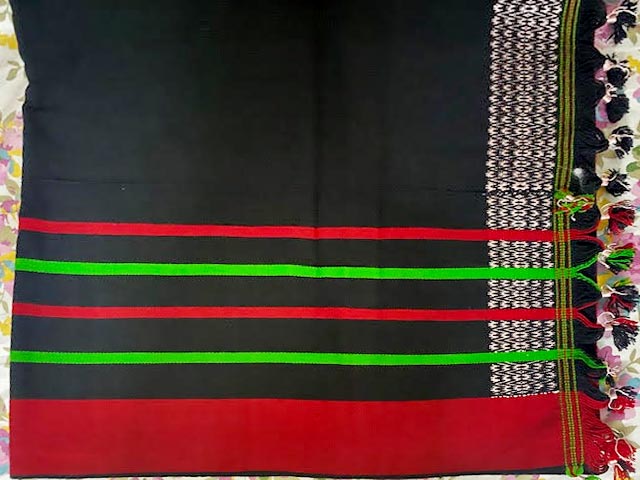
The cloth is woven by women on the loin loom and there is widespread use of cotton and hemp. The Naga methods of processing, spinning and weaving are simple. However, the motifs, designs and patterns that are woven on to the cotton differ from tribe to tribe.
Nagaland’s several tribes don clothes with bold, distinctive patterns — mostly comprising simple clean lines, stripes, squares and bands. Each tribe has its own specific designs and motifs for shawls, wraparounds or wrappers.
Many traditions and beliefs are associated with the weaving and wearing of traditional dresses.
For instance, when a Chang tribal weaves cloth, she is careful to ensure that all zigzag lines fall uniformly, or else the young warrior may die a premature death. When a Konyak woman gets married, she wears a Shatni shawl, which is preserved after the wedding and only used to wrap her dead body.
Convention demands that a Rongtu shawl be worn only if the Mithun (animal) sacrifice has been conducted over three generations.
Colours
Earlier, a number of plant extracts were used to dye cloth, including indigo, mahogany and lacquer. The methods have changed but yarn dyeing remains a significant art in the state.
Men and women of Nagaland still don richly coloured clothes, with beautiful, intricate designs. Common colours are black, white and red.
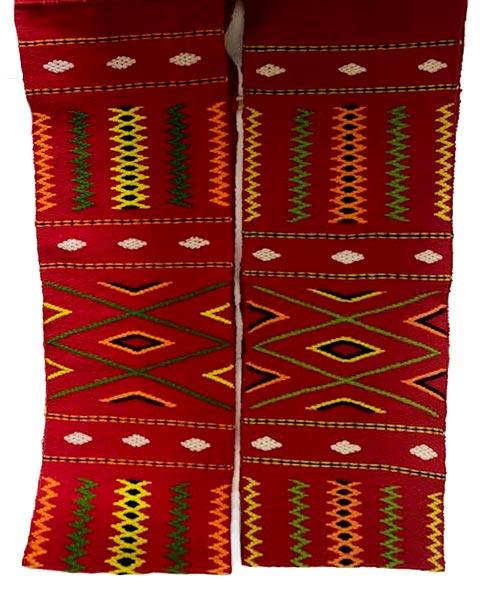
Superstition and belief also back the selection of colour. Red symbolises blood and it is believed that if a young woman dyes her cloth red, she is sure to die a violent death. Thus, only old women dye yarn red.
The colour combinations and designs have social significance and symbolic meaning. The dress a person wears reveals his/her standing in the tribal hierarchy. For example, men are allowed to wear certain patterns and colours only after establishing a record of feats and achievements.
Shawls
A Naga shawl is the most important part of the attire and is largely woven with cotton and staple fibre. Some wool is also used. In the times when needles were not available, small patches of embroidery were added to shawls using a porcupine quill.
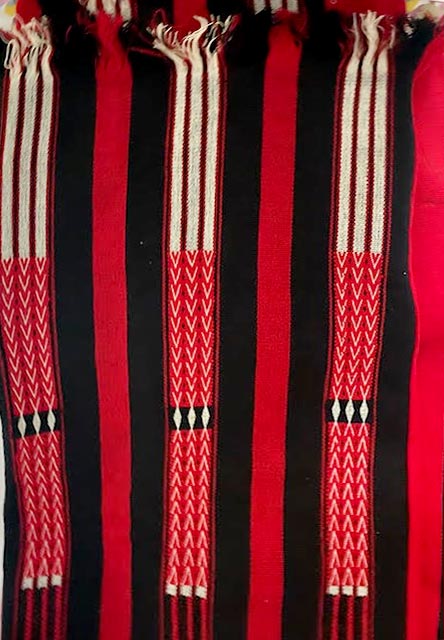
Shawls vary from simple white ones to elaborate coloured ones with symbols. Within each tribe, there is a distinction between classes on the basis of the shawls they wear. Elaborately designed shawls are used by the warrior classes or the rich segments within the tribe.
Jewellery, too, is a distinguishing factor. Both women and men wear jewellery from head to toe. They use a variety of materials for jewellery, such as bronze, brass, boar and elephant tusks, shells, coral, agate and glass beads.

